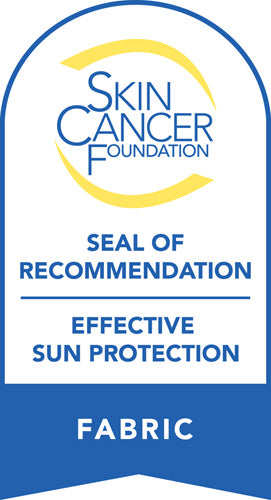Sun Tanning Safely: When To Tan And When To Cover Up
Sun tanning is an art, but it's also a risk. Read below to find out some best practices on protecting your skin.
It doesn't matter whether you're purposely lying on the beach, poolside, or enjoying your favorite outdoor activity. The sun is above you, and its rays can damage your skin, even if you can't feel them.
Unfortunately, one in five Americans will develop skin cancer by the time they're 70. This leaves us with the question: is there a way to get a tan safely?
Let's find out.
Sun Tanning Safely: Is it Possible?
There are a lot of myths out there about tanning and its effects on the skin. Many people even believe that as long as they develop a base tan, they'll be fine to stay in the sun all summer long. They also think that as long as they don't burn, they're perfectly safe.
Here's the truth about your skin and the sun: as long your skin is exposed to UVA and UVB rays, it's at risk.
According to the American Academy of Dermatology (AAD),melanoma cases have doubled since 1982. Melanoma is the deadliest form of skin cancer—and skin cancer, in general, is the most common cancer diagnosed here in the United States.
Of course, cancer isn't the only risk you're taking with your summer tans. Sun damage will rear its ugly head in the form of bad sunburns to rough, scaly skin. Not to mention, it also causes premature aging. Each time you tan, you're trading in your young, supple skin for fine lines, wrinkles, and pigmentation.
Different conditions such as age spots and discoloration, Rosaceae, Poikiloderma of Civatte, Actinic keratosis, and Cheilitis may also appear over time. Each of these conditions can appear as mild or severe, in the form of severely discolored, sensitive, and itchy skin.
The sun isn't the only culprit, either.Tanning beds and lamps are said to increase your risk of developing melanoma by 20%, squamous skin cell carcinoma by 67%, and basal cell carcinoma by 29%. If anyone has ever told you that tanning beds and equipment are safer than sun exposure, they're 100% wrong.
How a Sun Tans Works
What exactly happens to your skin when you tan? Within the first 20 minutes of sun exposure, the melanocyte cells just below the epidermis rise to the surface. Once those cells are exposed to the Ultraviolet (UV) rays of the sun, they produce melanin, which darkens the skin.
Creating melanin is your skin's natural form of sun protection. However, it absorbs the UV light—it doesn't block it completely. When we stay out in the sun for too long, the UV light begins to penetrate deeper and deeper, past the absorption point.
UV light is virtually everywhere, even in the wintertime. It reflects off of every surface imaginable, causing damage even when we're not lying on a beach or poolside. It also doesn't discriminate.
The lighter your skin is, the more at risk you are—that's a fact. However, studies show that having darker skin can lead to a delayed diagnosis in certain types of skin cancer. So, it doesn't matter whether your olive skin "doesn't burn" or you're of African descent—you're still at risk.
How to Limit Your Risks
On the flip side, the sun provides us with many much-needed benefits. It boosts our natural serotonin levels, and it synthesizes vitamin D, which is necessary for our bones, teeth, skin, and immune systems. Plus, ever since Coco Chanel hopped off that yacht in St Tropez bronzed and glistening, tanning became a serious trend that just won't fade.
So, if you must tan, here are some tips on how to tan "safely":
Avoid Tanning Beds at All Costs
Don't let the girls behind the desk at tanning salons fool you. Indoor tanning is not safe by any means. Tanning salons generally use only UVA light, which they advertise as "safer" since UVB rays are responsible for burning the superficial layers of your skin.
UVA rays penetrate much deeper into the dermis, which is the skin's thickest layer. This leads to premature photo-aging and it suppresses the immune system.
Apply the Right SPF
Your first line of defense under the sun is an appropriate sunscreen. Look for a broad-spectrum sunscreen, which will filter out virtually all UV rays. You'll also want to pay attention to the sun protection factor (SPF), which is a measure of how long it'll protect you.
Always go for an SPF of 30. SPF 30 filters out 97% of all UV rays, and anything higher than 30 will only give you a 1% advantage. The active ingredients should be zinc, titanium oxide, or a mixture of both for the best protection. Don't forget to reapply!
Cover Up
Sunscreen isn't enough, especially if you aren't vigilant about reapplying it. Aside from seeking shade to take a break from the sun, bring extra protection with you. So, cover up and wear protective clothing.
Wide brim hats, visors, sunglasses, umbrellas,SPF blankets and other clothing specially made for sun protection will do the trick. SPF clothing and accessories are especially convenient for outdoor sports enthusiasts who want to work out without sunscreen dripping into their eyes or messing up their grip.
Be Aware of the Time
The sun is strongest between the hours of 10 a.m. and 4 p.m. Of course, these are also ideal times to tan. It's okay to get some sun during these hours—just not all day.
Everybody's skin reaches a "cut-off" point where melanin can no longer be physically produced. The average person has two to three hours until their cut off point; less if they have fair skin. After this point, you're in the danger zone.
Take Care of Your Skin
Healthy skin is and should be a priority. Don't forget to examine your skin often, especially after long periods of sun tanning and exposure. Also, don't let those cloudy and overcast days fool you—sunlight reflect on all surfaces, including the clouds.
Want to learn more about protective sun clothing and gear?Contact us or check out our online shop.



